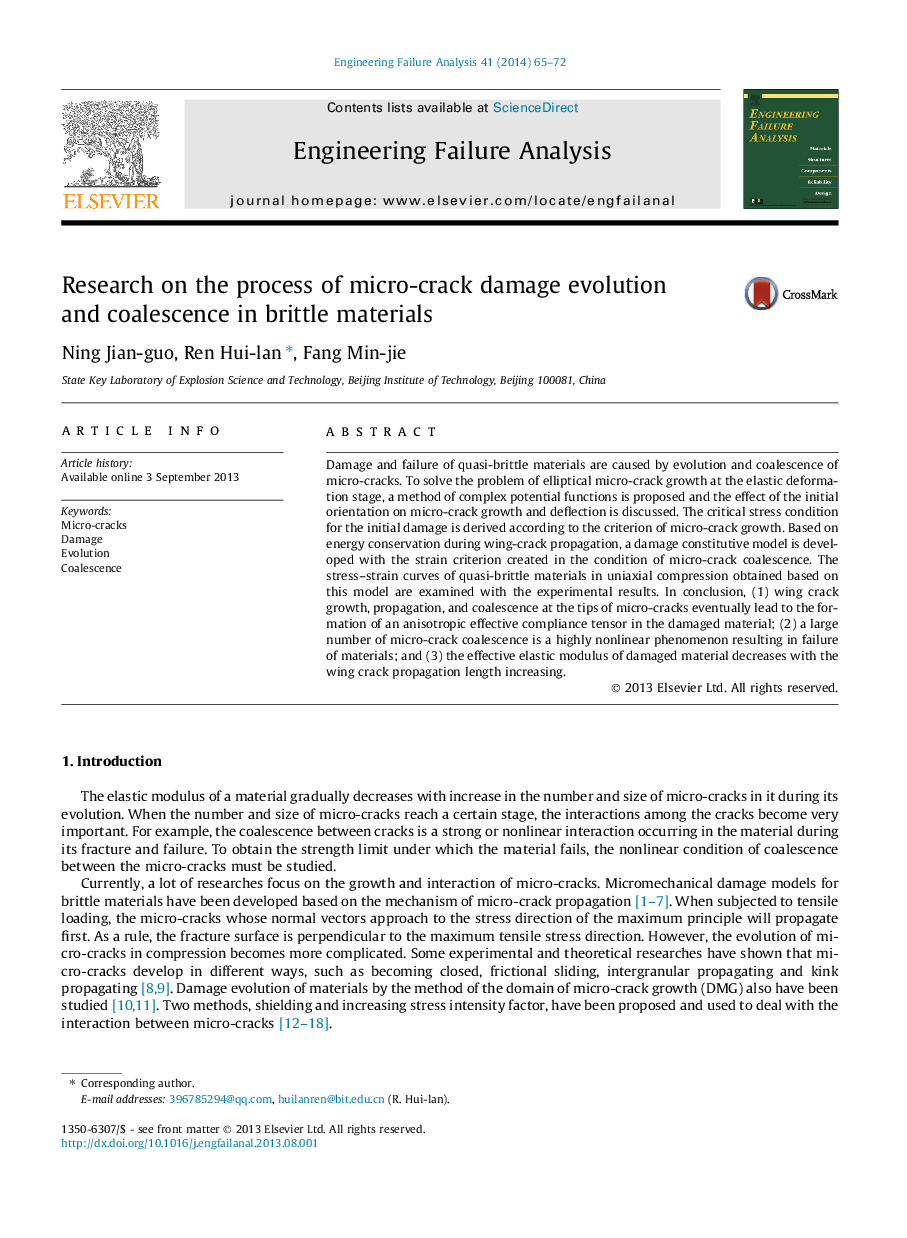| Article ID | Journal | Published Year | Pages | File Type |
|---|---|---|---|---|
| 773828 | Engineering Failure Analysis | 2014 | 8 Pages |
•Propose a method of complex potential functions to discuss growth of micro-crack.•Derive the critical stress condition for the initial damage.•Develop a damage constitutive model to describe the behaviors of brittle materials.
Damage and failure of quasi-brittle materials are caused by evolution and coalescence of micro-cracks. To solve the problem of elliptical micro-crack growth at the elastic deformation stage, a method of complex potential functions is proposed and the effect of the initial orientation on micro-crack growth and deflection is discussed. The critical stress condition for the initial damage is derived according to the criterion of micro-crack growth. Based on energy conservation during wing-crack propagation, a damage constitutive model is developed with the strain criterion created in the condition of micro-crack coalescence. The stress–strain curves of quasi-brittle materials in uniaxial compression obtained based on this model are examined with the experimental results. In conclusion, (1) wing crack growth, propagation, and coalescence at the tips of micro-cracks eventually lead to the formation of an anisotropic effective compliance tensor in the damaged material; (2) a large number of micro-crack coalescence is a highly nonlinear phenomenon resulting in failure of materials; and (3) the effective elastic modulus of damaged material decreases with the wing crack propagation length increasing.
